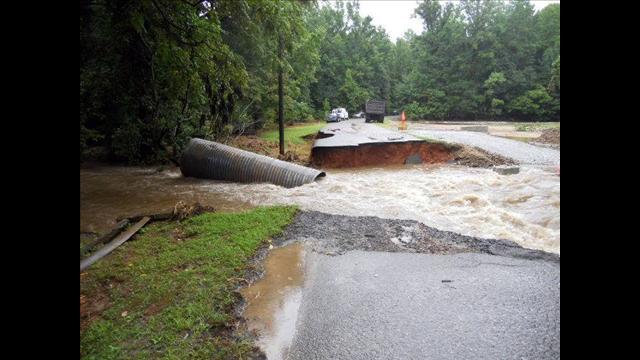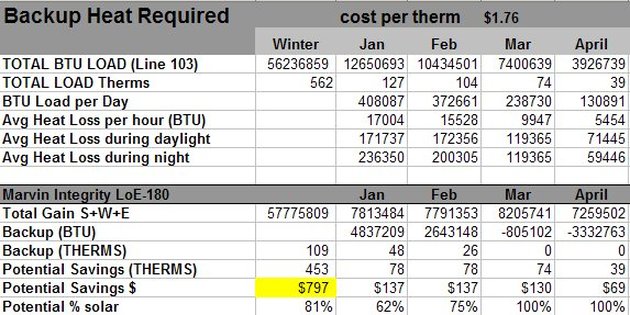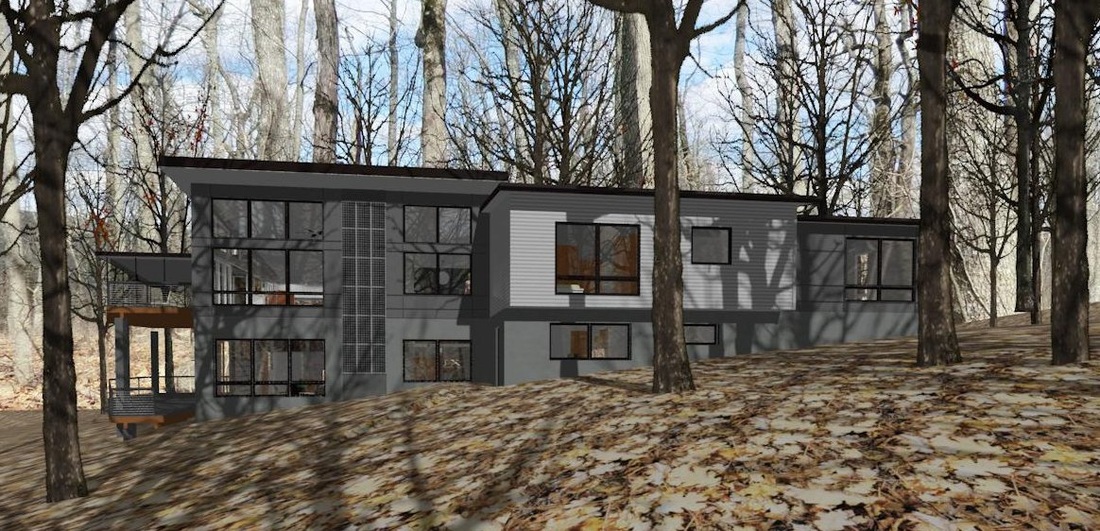We are going to have to give some additional thought to the drainage around the new house!
|
It's been a very wet spring and summer in general but last week brought torrential rainstorms throughout North Georgia.
We are going to have to give some additional thought to the drainage around the new house!
0 Comments
In this section we will look at a few different types of glazing to see how the Solar heat Gain Coefficient (SHGC) will affect how much passive solar heat we can collect  This table shows the R factor and SHGC for a few different windows. Old-fashioned dual-pane glass without Low-E coatings doesn't have a very good R factor. I won't consider it for the project but it is listed in the table for reference The next table shows the solar gain for one square foot of an Integrity window with Cardinal LoE-180 glass. This is a product that has a very good R factor and a fairly high SHGC. I know the table is a bit hard to read. The upper section shows the total solar gain for each orientation (i.e. north, east, south, west). It is interesting to note that even the north windows gain some solar energy in the winter. Unfortunately, windows have a fairly low R factor so they also lose energy. The lower section of the table shows how much energy is gained (or lost) for each orientation. It is not surprising that north windows lose more energy than they collect throughout the heating season. East and west facing windows will also lose energy during the coldest months but will have a net gain in February, March, October and November. The south facing windows have a net energy gain all through the heating season (sorry for the tiny print) We can do similar calculations for each of the different window types. I was surprised to discover that the Anderson SmartSun glazing (very low SHGC) actually loses energy even through the south facing windows all winter. It would be a very poor choice for a passive solar home. The bottom line in any cost-effective design is to determine how much energy and $$ will actually be saved by the alternative designs. The following table shows the potential savings for Integrity high-SHGC windows versus the Anderson mid-SHGC windows. Note: to make the tables more readable I'm only showing January through April. Conclusion Although the high-SHGC windows perform much better during the coldest months, there are four months of the year (March, April, October and November) where the heat load is so low that both products perform, about the same. The bottom line is that we can predict a savings of about $797 / year with the high-SHGC windows and a savings of about $614 / year with the mid-SHGC glazing so there is only a $180 per year difference. If the products cost the same then the high-SHGC glazing would be a clear winner. Unfortunately, the Integrity windows cost about $8,000 more than the Anderson 100 series so it would take roughly 44 years to pay for the difference. We will use the Anderson 100 windows and look for other ways to save $180 per year on energy. Photo-voltaics are starting to look more interesting even though Georgia is not a very solar-friendly state. Last week, Tracey won the Chief Architect Green House Design contest with her entry of neoTerra.
The design will be featured in a live webinar on August 7th. Check the contest results out here: https://www.facebook.com/ChiefArchitect#!/photo.php?fbid=691554027540519&set=a.136631409699453.21564.130385066990754&&theater Congratulations, Tracey!! |
Archives
April 2025
Categories
All
|








 RSS Feed
RSS Feed